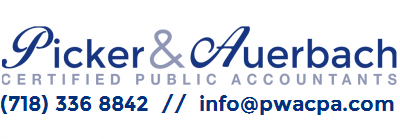
With many retirement accounts in the tank this year, presidential candidates and other lawmakers have called for all sorts of measures aimed at helping people pick up the pieces of their broken nest eggs.
Sens. John McCain and Barack Obama have proposed waiving the requirement that Americans age 70-1/2 and older must take a minimum distribution from their traditional IRAs.
AARP has joined the chorus as well. Bill Novelli, AARP’s chief executive, sent a letter Thursday to U.S. Treasury Secretary Henry Paulson urging him to take immediate action to temporarily freeze mandatory retirement account withdrawals.
“Making minimum withdrawals optional rather than mandatory for this year beginning immediately would help give older Americans some much needed financial flexibility as they struggle to manage their finances during this difficult economic time,” he said in the letter.
Waiving required minimum distributions, or RMDs, would be a boon to many older Americans who must calculate their 2008 distribution based on the value of their traditional IRAs as of year-end 2007, a value that was likely much higher on Dec. 31, 2007 than now.
But tax experts are not holding their breath for that perk. Instead, they’re turning their attention to other tax breaks available to IRA owners in the aftermath of all this market turmoil.
There’s even some question as to whether the next president will be able to get the change to RMDs put in place. “I’m not sure the IRS has the power to make the change, since the requirement to make distributions is in the law,” said Barry Picker of Picker, Weinberg & Auerbach, CPAs, and author of “Barry Picker’s Guide to Retirement Distribution Planning.”
Kaye Thomas, president of Fairmark Press, said “I’d be a little surprised to see Treasury take this action [waiving RMDs]. It’s less crucial than many of the other kinds of relief that have been granted or are being considered.”
Besides the sheer complexity of changing the RMD law this late in the year, there are all sorts of logistical nightmares. For instance, Thomas said that many people (including those who own inherited IRAs and must take RMDs as well) have already taken their RMDs for the year and might be put out seeing people who delayed their distributions until late in the year get out of the requirement. “People who have already taken their RMD could perhaps re-deposit their RMD back into the IRA, all taxes and penalties voided,” he said. But that’s unlikely.
What’s more, Thomas questioned whether firms that manage IRAs or other retirement plans could handle a change in the rules on such short notice. Again, highly unlikely.
Fortunately, IRA owners do have some tax breaks available to them, according to the most recent issue of Ed Slott’s IRA Advisor and other experts. Here are seven such perks:
1. Year-end Roth IRA strategies
If you have a traditional IRA, 401(k) or some other employer-sponsored retirement from which you are eligible to take a distribution, the money is invested in stocks and your 2008 income is less than $100,000 on a single or joint return, you can convert those retirement accounts into a Roth IRA now at a lower tax cost. Typically, you would have to pay ordinary income tax on the amount being converted. Since the value of your traditional IRA is likely lower now than at year-end 2007, the tax hit will be lower as well.
“There’s another benefit to a Roth IRA conversion that occurs at or near year-end for a taxpayer establishing their first Roth,” according to Slott’s newsletter. “All 2008 Roth IRA conversions have a Jan. 1, 2008, starting date, regardless of when the conversion occurs during 2008. Roth IRA distributions are completely tax-free five years after a conversion, as long as the account owner is at least 591/2 years old.”
Some other points to consider: the amount being converted counts as income so 1) make sure you have the money to pay the tax bill due from accounts other than the IRA account you are converting and 2) consider a partial Roth IRA conversion if the amount you want to convert might push you into a higher tax bracket.
Also, to make sure the conversion counts as a 2008 Roth conversion, the funds must be withdrawn from the IRA or company plan by year-end 2008. (You have to deposit those funds within 60 days in the Roth for it to count as a 2008 Roth conversion.)
2. Roth re-characterizations and re-conversions
If you are among those who think stocks — and thus the value of your IRA or company retirement plan — are headed lower and you think you might get a better deal by converting your IRA later, there’s this option: You can convert by year-end and then reverse or “re-characterize” at any time up until Oct. 15, 2009. By doing that, you would get the taxes back that you paid. Also, if you already converted from a traditional IRA to a Roth IRA, it might be worth re-characterizing now, while the market is down and your Roth IRA is worth less, said Slott’s newsletter.
Another point to consider: “Roth IRA conversions are available in 2008 and 2009 only to taxpayers with $100,000 or less in income (not counting the conversion income itself or any RMDs from IRAs). That $100,000 is modified adjusted gross income (MAGI) but in many cases your MAGI number will be the same or very close to your AGI.”
One more note of caution: If you convert and pay taxes with money from an IRA to pay the tax bill, and then decide to re-characterize your Roth conversion, you won’t be able to put the funds used to pay taxes back into the IRA.
3. NUA opportunities
If you’ve been laid off and have a lot of company stock in your retirement plan, you might be eligible for another tax break, Slott said. It’s called the net unrealized appreciation or NUA benefit. If you have a lot of appreciated employer stock in your retirement plan, then you can take a lump-sum distribution in a single calendar year and get a big tax break, Slott says.
Here’s how it works: Let’s say you have $500,000 in your retirement plan, $250,000 of which is employer stock and has a cost basis of $100,000. You ask for lump-sum distribution and request what’s called an in-kind distribution of the employer stock. In essence, you will be transferring your employer stock into a taxable account and rolling over the non-company stock assets into an IRA.
By doing this, you will pay taxes on the basis of the stock, $100,000, at ordinary income tax rates instead of on the appreciated value. Then, when the stock is sold you’ll pay Uncle Sam his due at the presumably more favorable long-term capital gains rate.
Another point to consider: If you plan to take capital losses in your taxable account, you might be able to use those losses to offset any capital gains realized as part of your NUA strategy, Slott said. Check with your CPA before doing this at home, but here’s how it would work: Transfer the NUA stock into a taxable account and sell the shares to raise the cash necessary to pay the ordinary income tax bill due. Then sell the stock and use the gain to search for stocks that you could sell at a loss to offset the gain. Doing so could mean owing no tax at all.
4. Year-end RMD planning
If you turned 70-1/2 in 2008, Slott said you must begin taking RMDs from your IRAs by April 1, 2009. The first distribution will be based on your IRA balance on Dec. 31, 2007. And then you have to take another distribution before Dec. 31, 2009 based on your IRA balance on Dec. 31, 2008. Typically, it’s better to take the first RMD in 2008. But it might make sense, especially if your income will be much lower in 2009, to “bunch” distributions in 2009.
5. 72(t) adjustment for lower values
If you are in the middle of taking what are called “substantially equal periodic payments” from your IRA and the value of your IRA has declined, it might be possible to adjust your payment plan. Under what’s also called the 72(t) payment plan, IRA owners can take money out of their account for at least five years or until age 59-1/2 using one of three distribution methods– amortization, annuity, or RMD.
“But if the balance [in your IRA] has severely declined, causing the annual 72(t) payments to become a much larger percentage of the IRA balance, there is relief,” Slott said. The IRS permits a one-time switch from either the amortization or annuitization methods to the RMD method. Switching to RMDs could help lower the amount that you take out, thus saving the IRA from being depleted too quickly.
6. ‘Alternate valuation’ estate tax break
If you inherited assets from someone who just died, Slott writes that you might be able to save yet again on your estate tax bill by using what’s called the “alternative valuation date.” When someone dies, you either value all their assets at the time of date or six months after the actual death. If the value of the estate, including the IRA, at date of death creates a tax burden, it might be worth using the alternative valuation date, especially if the IRA (and possible other assets) have declined in value. Again, make sure you consult a qualified professional before attempting try this technique at home.
7. Future RMDs
It’s likely IRA owners will face a similar situation again, where the value of their IRA has declined and they must calculate their RMD using a higher year-end balance than is in the account at the time of the distribution. For those people, Picker recommends keeping the RMD portion of the account liquid, in cash.




